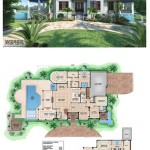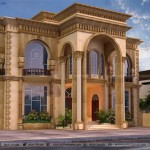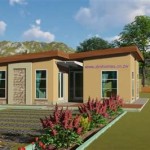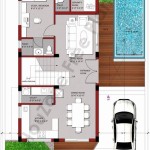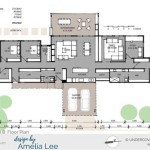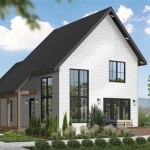House Plans On Steep Hillsides
Building on a hillside presents unique challenges and opportunities. While the views can be breathtaking, the sloping terrain requires careful planning and execution. Choosing the right house plan is the crucial first step in ensuring a successful and safe hillside build.
Consider a Multi-Level Design
Steep slopes often lend themselves well to multi-level house plans. These designs work with the natural contours of the land, minimizing the need for extensive excavation and grading. Split-level, bi-level, and daylight basement homes are popular choices for hillside lots. They allow for distinct living zones, taking advantage of the changing elevation to maximize views and privacy.
Prioritize Structural Engineering
A qualified structural engineer plays a vital role in hillside construction. Soil stability, foundation type, and retaining wall design are critical factors that must be carefully considered. The engineer will assess the site's specific conditions and recommend appropriate structural solutions to ensure the stability and safety of the home. Investing in a thorough engineering assessment upfront can prevent costly problems down the line.
Maximize Natural Light and Views
One of the primary benefits of building on a hillside is the potential for stunning views. House plans should be designed to capitalize on this advantage. Large windows, strategically placed balconies, and outdoor living spaces can seamlessly integrate the home with its natural surroundings. Orientating the home to maximize natural light can also reduce energy consumption and enhance the overall living experience. Consider incorporating elements like skylights and clerestory windows to bring light into areas that might otherwise be shaded by the slope.
Incorporate Walkout Basements
Walkout basements are a valuable feature in hillside homes. They provide additional living space while seamlessly connecting the home to the outdoors. A well-designed walkout basement can function as a separate apartment, entertainment area, or home office, increasing the overall functionality and value of the property. The sloping terrain naturally allows for direct access to the backyard, creating a usable outdoor space even on a steep incline.
Choose Appropriate Materials
Material selection plays a significant role in the durability and longevity of a hillside home. Consider using materials that can withstand the elements and require minimal maintenance. Durable siding options like fiber cement or stucco can protect against weather exposure, while robust roofing materials can withstand heavy snow loads or high winds. Furthermore, opting for materials that blend with the natural surroundings can enhance the aesthetic appeal of the home and minimize its visual impact on the landscape.
Address Access and Driveway Design
Access to a hillside property requires careful consideration. Driveway design and placement are crucial for safety and convenience. Switchback driveways or steep inclines may be necessary to navigate the slope, and adequate parking space should be incorporated into the plan. Consult with a civil engineer to determine the best approach for driveway design and ensure it meets local building codes and regulations. Consider factors such as drainage, erosion control, and snow removal when planning the driveway layout.
Plan for Landscaping and Drainage
Landscaping and drainage are essential components of a successful hillside build. Properly designed landscaping can help stabilize the slope, prevent erosion, and enhance the aesthetic appeal of the property. Retaining walls, terraces, and strategically planted vegetation can create a visually appealing and functional landscape while mitigating the risks associated with steep slopes. Effective drainage systems are crucial for managing rainwater runoff and preventing soil erosion. Consider incorporating French drains, swales, and other drainage solutions to direct water away from the foundation and protect the structural integrity of the home.
Think About Fire Safety
Homes on steep hillsides often face increased fire risks due to their proximity to vegetation and challenging access for emergency services. Incorporating fire-resistant materials into the construction, creating defensible space around the home, and ensuring adequate access for fire trucks are important considerations. Consult with local fire officials to understand the specific fire safety regulations and recommendations for your area.
Budget Accordingly
Building on a hillside typically involves higher construction costs compared to building on a flat lot. The complexities of the terrain, the need for specialized engineering, and the potential for challenging access can all contribute to increased expenses. It's essential to develop a realistic budget that accounts for these factors and includes a contingency fund for unforeseen challenges that may arise during construction.

Steep Slope Home Designs House Plans 3 Jpeg 480 398 More Houses On Edge Dream Design Architecture Modern

The Architect Split Level House Built On Steep Slope Description From Kathabuzz Co Into Hillside Architecture Unique Plans

Home Designs For Sloping Blocks Mark Lawler Architects

Steep Slope House Design Goes Vertical Just Like Trees

Innovative Houses On Sloped Plots

Build On A Steep Slope Turkel Design

Mountain Modern Steep Slope Sloping Lot House Plan Hillside

4 Massing Strategies For Building On Sloped Sites

The Steep Hillside House Nerd

Sloped Lot House Plans With Walkout Basements At Dream Home Source Unique Modern Architecture

